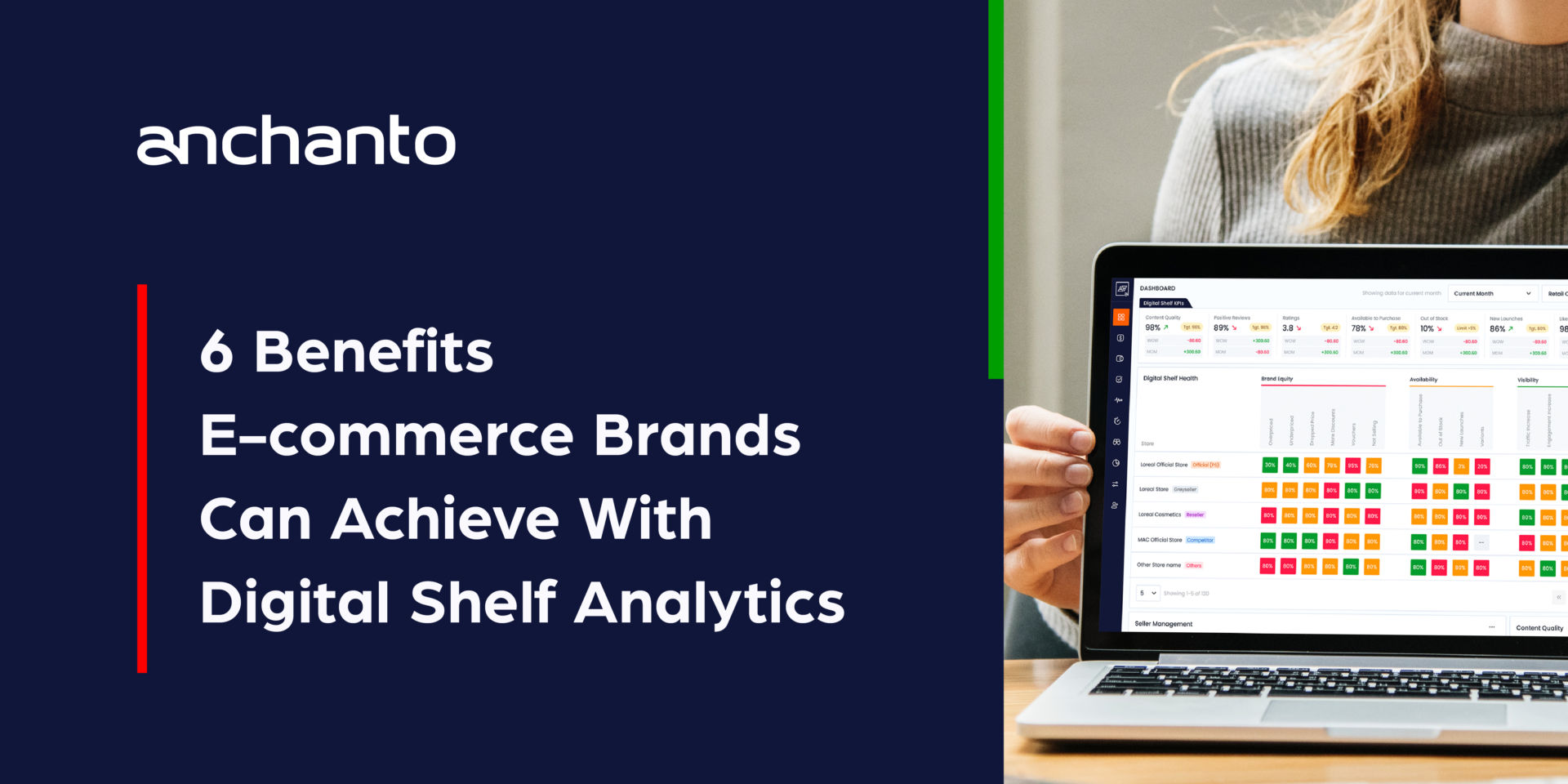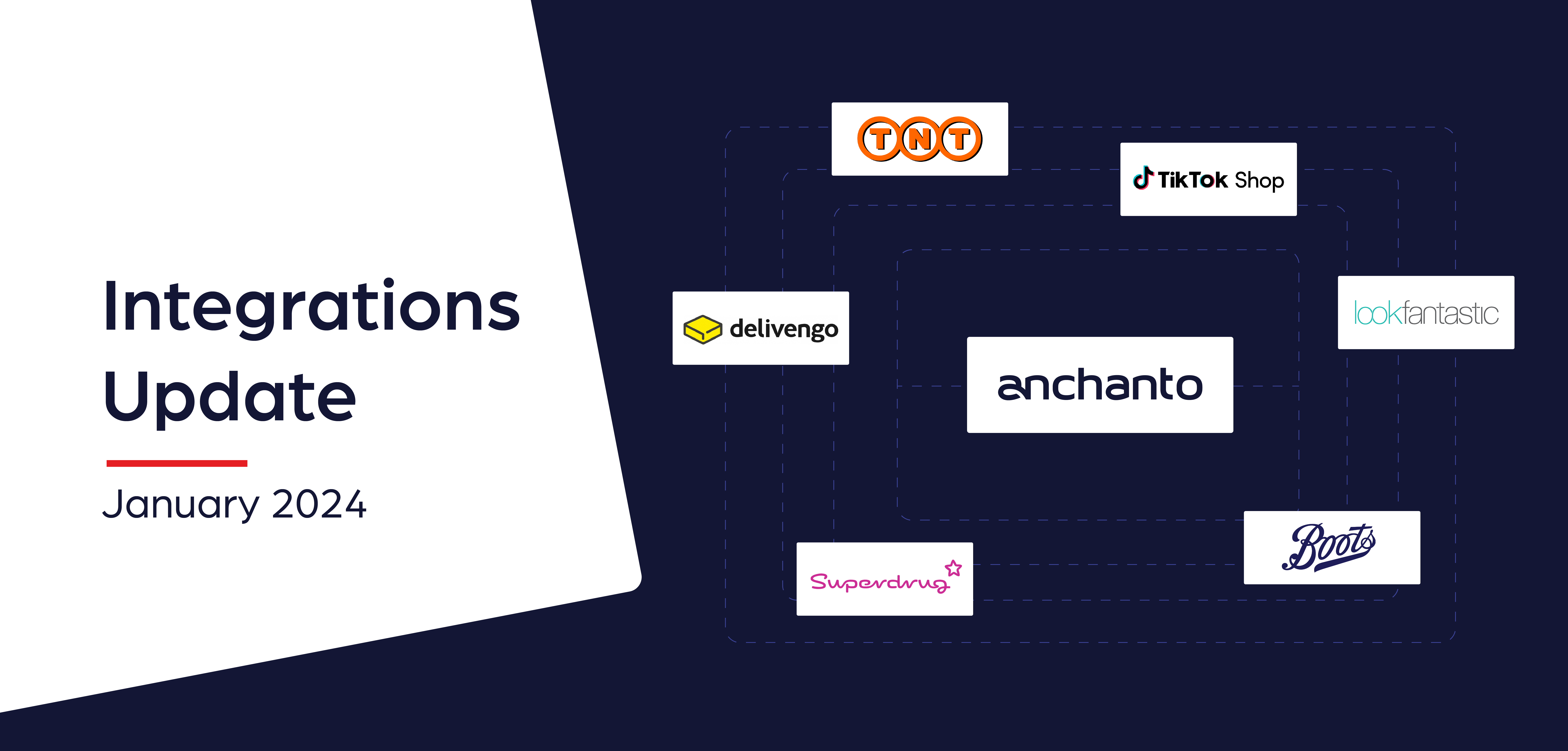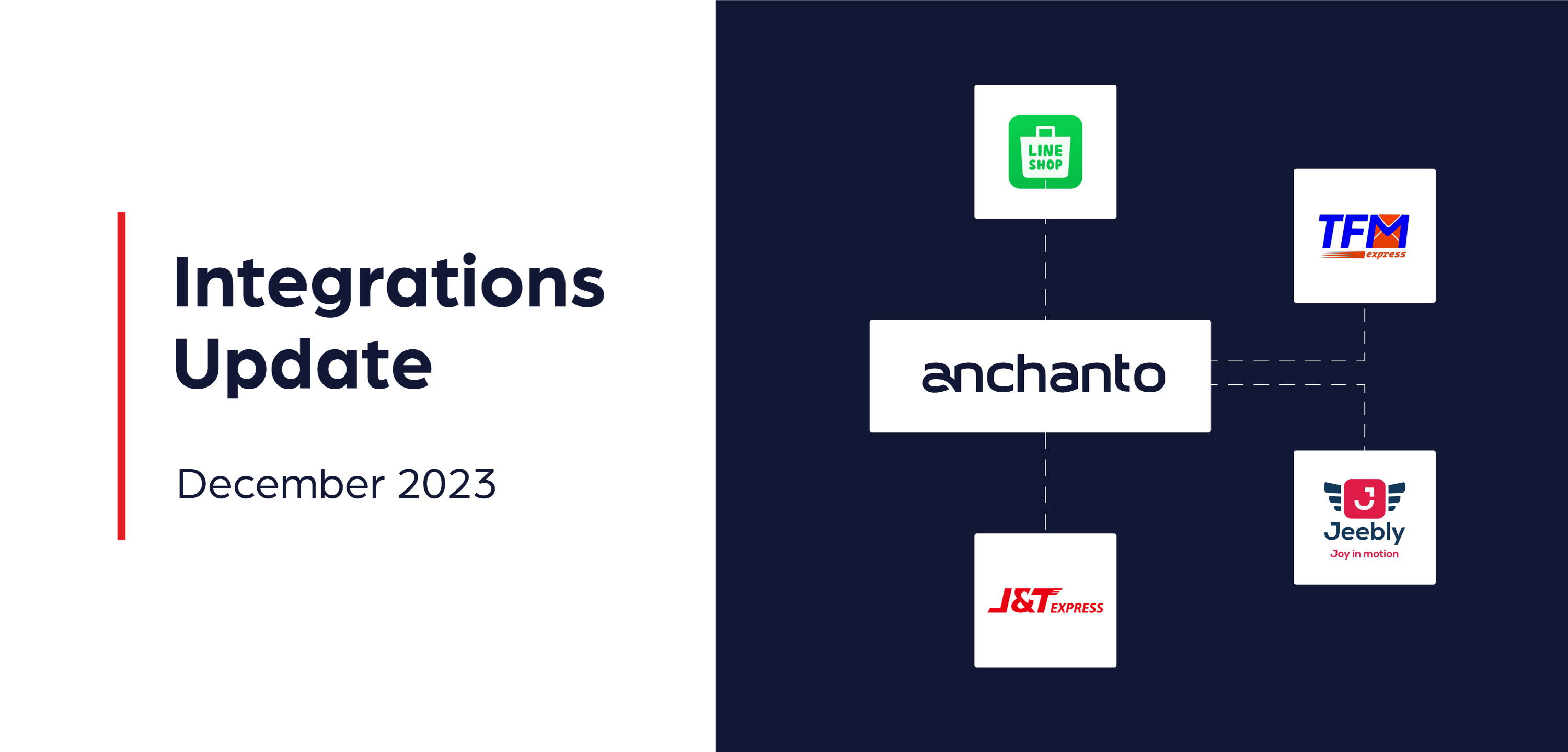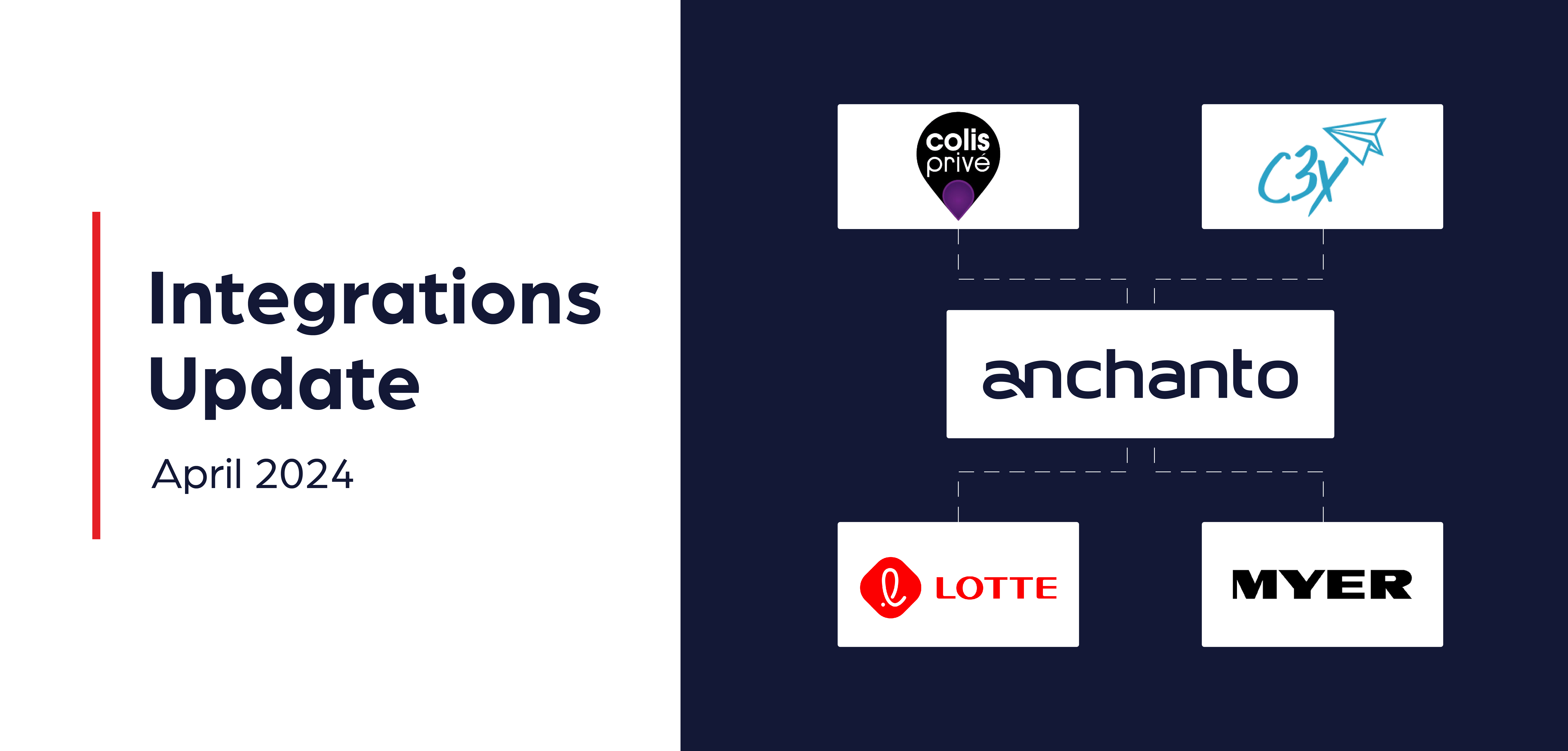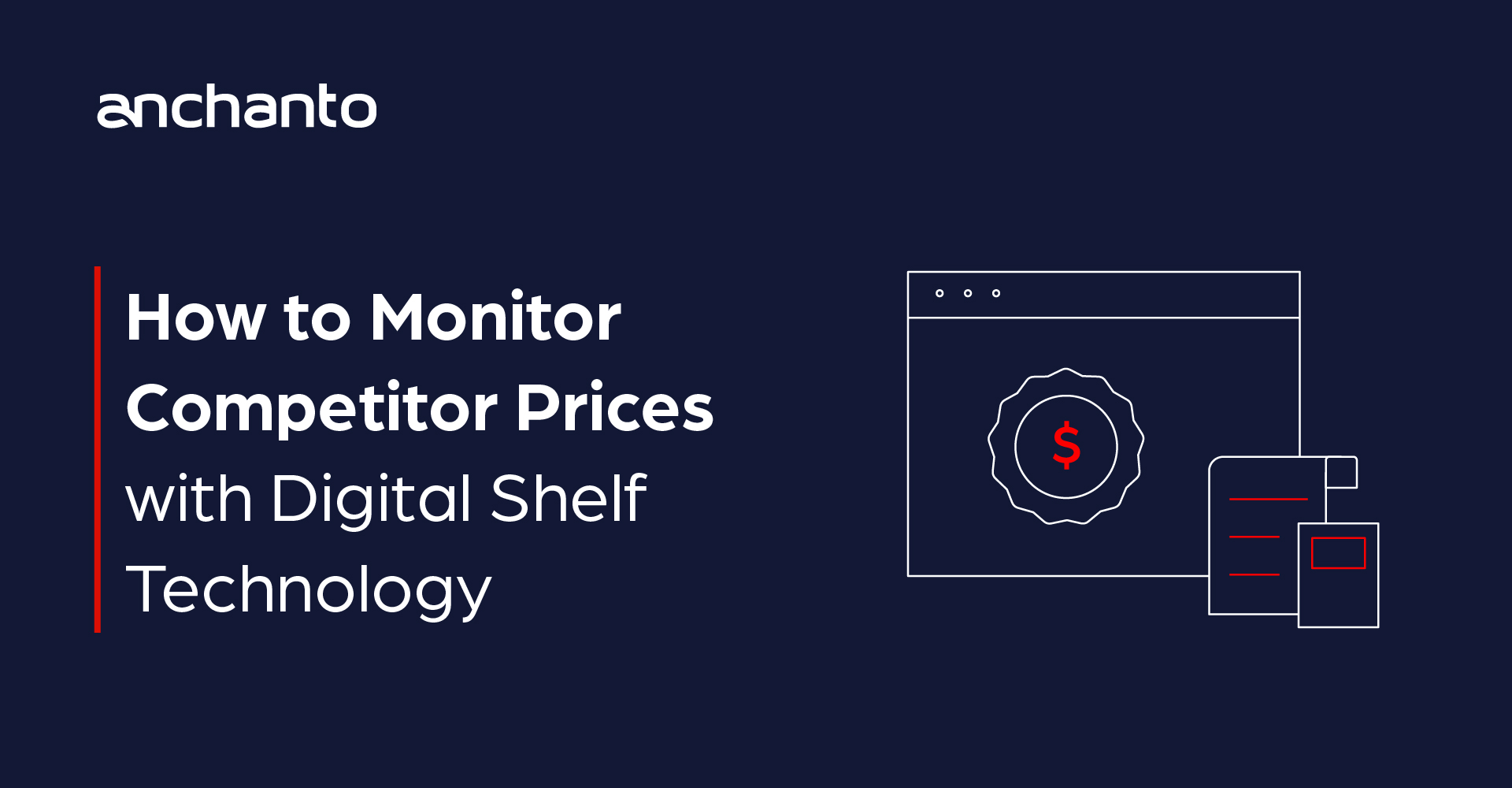
How can you launch a SaaS product successfully?
The success of an enterprise SaaS company goes hand in hand with the products they build. But, have you ever wondered just how many software solutions are implemented daily in the world? You would be surprised to know that the average time to fully implement a new software product has gone down from 57 hours a decade ago to 7 hours today.
This means if your SaaS product is built to help customers get up and running at record speed, it is bound to be in demand. But, how exactly can you build such a SaaS product? I’ll cut right to the chase – when a product is built with a strong reason (purpose) and vision, there is nothing that can stop it from succeeding.
A purpose-driven product is a product that is motivated by the company’s core mission. The reason why they exist is to solve a problem or meet a need in the industry, and that purpose informs the product’s vision, mission, story, visual identity, decision-making, and more.
Here’s how you can launch a successful SaaS product off the ground.
Establishing the Vision Behind Building a SaaS Product from Ground Up
While the world at large only witnesses a new product, there is a massive amount of effort, time, energy, and sometimes money that goes into building it.
And that is precisely why it is important to have a vision when building any product, especially a SaaS product.
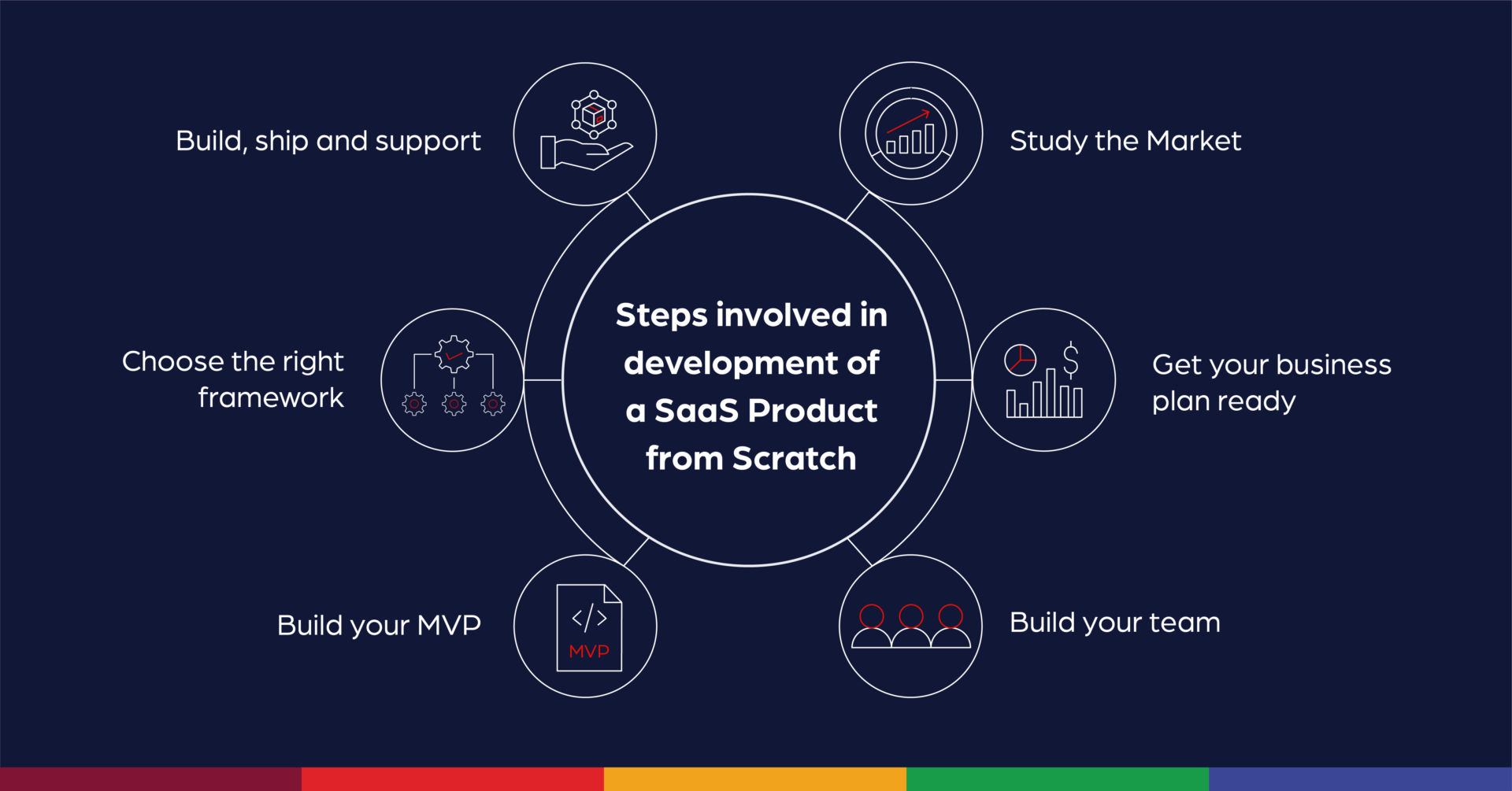
There are various steps that are involved in the development of a SaaS product from scratch. These building blocks act as the groundwork for bringing the product vision to reality.
Based on my experience of building one of Anchanto’s flagship products, that is Anchanto WMS, let me walk you through the process while sharing some personal experiences along the way.
1. Study the Market
This one may seem like a no-brainer but in order to understand if the current market is ready for your idea, you need to prepare a proper study. A detailed market study will allow you to check for potential customers, existing products which may be similar to yours, USPs of a competitor’s product, etc. This in-depth research of the market will ensure you not only see the maturity of your product but also build a unique business model to stand out from the competition.
At this stage, make sure to involve your team in all possible discussions to take important feedback into account. Together, you can work on a product vision that holds a strong stance in the face of all these questions.
Clarity about the product fit should be the biggest outcome of the market study stage.
2. Get your Business Plan Ready
The next step is to make sure you have a roadmap in place. The existing market is full of innovation and having a proper, detailed business plan will ensure that your SaaS product stands out.
Start by finding a short and to-the-point answer to identify your product’s USP. Following this step, you should consult with various key individuals in the company to decide on the right pricing, the method of advertising to your target audience and so on.
Here, make sure the central idea of every action focuses on the pain points solved by your product and build your story around it. In case of any funding requirements, you can address those at this stage.
3. Build your Team
It doesn’t matter if you are just an independent founder or working within an organization, building a suitable team will always be the step that makes or breaks your product. The people you trust with your idea have to be the right ones to ensure success. Build your product with the best people and see how the right talent will hold through the challenges and ensure solutions.
Identify various skills that you may require and select individuals who can bring those skills to the table.
A successful SaaS product usually requires a team of software developers, product designers, testers, quality analysts, business analysts, marketers, and more. Identify your need and build your team accordingly.
The one thing that stood out about our Anchanto WMS team was their detailed knowledge and clear understanding of the product and why we were building it. Pick anyone from our team and they can answer most of the questions you may have about the product.
Just like a pilot should know how to take off, stay in the air, and land a plane, a product team should know everything about the product they are building.
4. Build your MVP
Having an appealing MVP, that is Minimum Viable Product, will make users instantly want your product. And if that is not happening already, then you know what your goal should be. MVPs are not fully functional products but you can present them as concepts to the first few prospects to validate your idea.
This stage will also allow you to collect important information about the actual experience of using your solutions or your product.
5. Choosing the Right Framework
This is the step where you choose the programming language, different tools, and frameworks for your SaaS product. You will need a plan to manage the frontend as well as the backend development to ensure your solution runs smoothly from end to end. Here, you must also choose the SaaS host – the cloud service – to host your SaaS product.
After this, all you need is to sort your database services and you can see the finish line.
6. Build, Ship, and Support
With a clear vision of what you want with your SaaS product, you are now almost at the end. Once you implement all the steps mentioned above, you can actually build your product. Having a clear development plan with agile methodology is always a good practice when building your product. Once done, all you need to do is ship and your product is now live.
The endpoint is not when you finish developing a product and ship it. It is when you offer consistent, world-class support to your customers. It is what determines success.
All these steps give you an overview of what it takes to build a successful SaaS product. Based on these, there are 4 main stages of building a SaaS product and how we did it for our Warehouse Management Solution, Anchanto WMS.
Here are the stages involved in the execution of the product vision:
Stage 1: Getting the Initial Stages of Building a Product Right
When we started building our product, Anchanto WMS, we focused on bringing our product vision to life by following some key steps. These steps involved a deep inquiry into the following:
i. Determine if Your Users Exist and Validate Your Idea
For any product to exist and thrive in the market, there must first be a strong need for it. It is important to identify the ideal users of your product and once you confirm that they do exist, you must validate your idea with their requirements.
ii. Study Your Competitors
No idea is exclusive. Well, that statement is almost true. There is a chance that the product you are building is similar to some other solutions that are currently available in the market. But this should not be a reason to give up on your product. Instead, ask the question of how your offerings stand out. Is your solution suitable to fill in the gaps left by existing competitors? If the answer is yes, you get your USP. If the answer is no, you will understand where there is a scope for improvement.
iii. Choose the Right Pricing Model
In the stages of establishing a vision for your SaaS product, we discussed choosing the right pricing model. Make sure to do it in the initial stages. You must also consider various options for contract renewals and possible customizations. Consult a few team members and derive the best plan for your product.
iv. Define Your SaaS Requirements for Your MVP
Let’s say you have reached this stage and now you are looking to build your MVP. But, before you do that, make sure all your SaaS requirements are in place. Understand what it is that your product is solving and keeping these pain points in mind, build an MVP that speaks directly to your customers and offers them the solution.
When I joined Anchanto as a Product Analyst, I made sure to understand the existing products we offered and gain as much clarity as possible about the product requirements. This helped me determine exactly what was needed from me and my team. And that is what allowed us to perfect this stage when building Anchanto WMS’s current version.
When you are done with these steps, your first stage of building a SaaS product is complete. With key learnings and a plan for the next stage, you can focus on how to build and launch your product into the market.
Stage 2: Building the Product and Launching it into the Market
There are a few more requirements to complete before a product goes to market. For example, you must have clear KPIs in place and incorporate user feedback before launching your product. And that is why stage 2 can be called one of the most crucial stages of this entire process.
Here are the steps that go into the development of a product:
i. Work on a Clear Positioning Statement
If you have a positioning statement for your product ready, half the game is won already. List down all your USPs and when you can explain your solution in just one sentence, that is when you know your positioning statement is ready.
ii. Set Clear Product Goals and Objectives
Every SaaS product is built keeping in mind certain pain points and challenges that potential customers want solved. At this stage, identify these goals and objectives and then measure the product against those.
iii. Establish Your KPIs
When you build a SaaS product, make sure you measure its performance and see how things can be improved. For this, make sure you have a prepared list of KPIs in place before you launch.
iv. Execution of Roadmap and User Feedback
The final part of this stage is to execute the roadmap you established. This stage will show you how well your product vision has been executed and the potential possibilities for success. Here, you should focus on collecting feedback from users on how the product is working for them, if it is helping them as planned, or if there are any enhancements that are needed.
As you conclude this stage, make sure to remember that every product is different. Even at Anchanto, using our OMS is an entirely different experience than using our WMS. So feedback is everything when it comes to offering enhancements.
This is also an exciting stage because the product is finally live and available for customers to use. But, to make sure they keep enjoying using it, you must continuously work on any feedback you receive.
The current version of Anchanto WMS is very stable and robust because we have spent a lot of time on it, and a lot of customizations have been done to improve the infrastructure. All of this was based on the feedback received from our users and with one singular goal in mind – we wanted to scale up.
Let’s talk about the importance of product refinement in detail in the next stage.
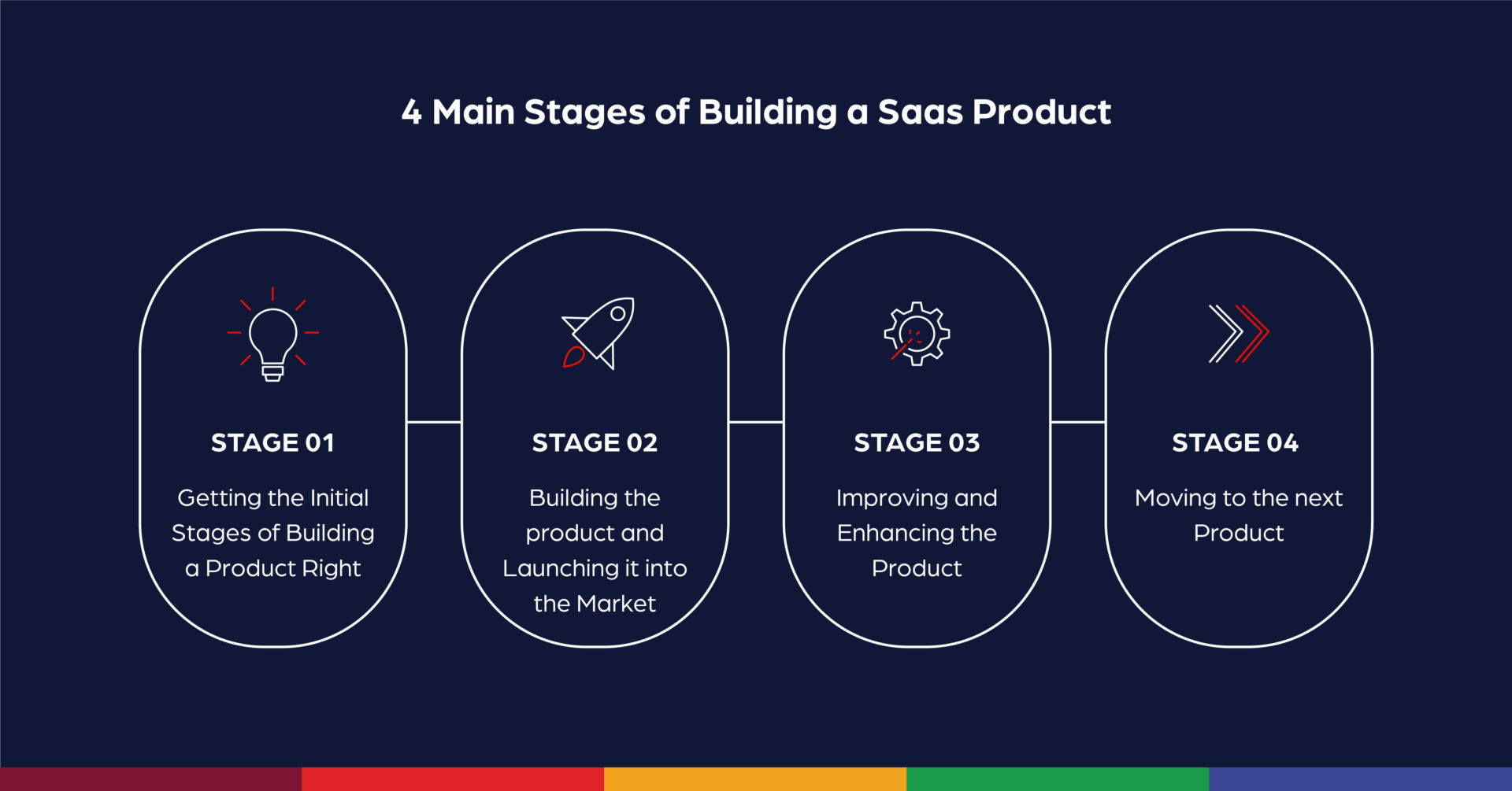
Stage 3: Improving and Enhancing the Product
The third stage involves working on the now launched SaaS product to ensure smooth functioning and improvements wherever needed. The focus will not be on taking the product to market but it will be on making sure that it is the best product for all users. Let’s look at some of the steps that are involved in this:
i. Deliver Features that Align with KPIs and Metrics
Let’s say you have launched your product and now want to introduce new features that offer more detailed and layered solutions to your customers. This is possible to do with proper feedback and vision. Make sure to develop and deliver these features while staying aligned with your established KPIs and metrics.
ii. Add and Enhance the Right Features
When your product is used by actual customers, you may receive feedback that will help you identify if a new feature is needed or if an enhancement is required for some of the offerings of your product. Once you identify these features, make sure to work on adding and enhancing them as required.
iii. Be Flexible
For any SaaS product to succeed, it is important to make it as flexible as possible. So, if your customers require certain customizations, make sure you work with them to identify the possibility for it. This is also where the product vision comes in place as you should ideally build your product to be flexible enough to adjust to new requirements.
While building Anchanto WMS, our core focus was on innovation and flexibility. Every feature that was added or changed was thought about from all perspectives. The product was conceptualised in such a way that it would support all the possible technologies and requirements that may arise in the future.
For example, our WMS users that expand their business and take on temperature sensitive products, can access the temperature-control feature of our system to store and manage these products appropriately.
iv. Gather Feedback and Measure Success
This step is very important at all stages. Whatever enhancements and improvements you have made should be useful for your customers. They should be easy to incorporate for you as well as for them. Measure your success by asking for feedback regularly.
For Anchanto WMS, we considered how it can be useful for 3 segments – small warehouse owners, mid-level businesses, and enterprises. We added features that would be used by all the segments and focused on how they can scale with our technology. For instance, we have supported customers who used to fulfil around 100 orders a day before using our WMS. But, once they shifted to Anchanto, they scaled up to process 5,000+ orders in a day.
And while this is a clear mark of a product’s success, the quest to improve the actual product never stops. With Anchanto WMS, we then focused on revamping our User Interface and User Experience. We wanted to make it as flexible as possible so we asked ourselves – If a user wants to perform an operation, how can they do it best? What can we change to make it better?
And then we did just that.
Finally, when you have a product that is working great, make sure to prepare yourself and your team to move on to the next innovation.
Stage 4: Moving to the Next Product
When your SaaS product is ready and launched into the market, and improvements and enhancements are done as per customer feedback, the fourth stage of the product life cycle comes into the picture – transitioning from one product to another.
At this stage, here are some questions you can ask:
How does the product perform?
Is the product stable?
If the product is performing well, without any issues, and is stable even when more is demanded from it, you will know it is okay to execute these next few steps:
i. Assigning One Team to the Existing Product
To make sure the product keeps running smoothly and stays stable, it is important to have one person or team dedicated to this product who will ensure that no issues develop for any customer.
ii. Identifying Other Pain Points and Issues that can be Solved Using Technology
Once you’re familiar with the process of building the product vision and developing a solution, you must check if there are any other pain points that technology can solve. This will give you an idea about the next product you can possibly build.
iii. Identifying the Vision for The Next Product
And just like that, you can start building the vision for your next product once you know how it can help customers. Then, all you need to do is press repeat and go through the stages again – but this time, you will also have your own experience guiding your decisions.
Building and launching a product is exciting. And to see your product succeed is beyond thrilling. This process can be extremely rewarding if a proper vision is set at the beginning to guide you through progress.
Nothing describes the joy our teams have felt when we witness customers using Anchanto OMS and WMS during peak sales seasons to manage and fulfil high order volumes. And this goes on to show only one thing – if you have a brilliant product at hand, with the right vision, you can help solve some massive challenges for your customers. It also makes the job of every salesperson easy because efficiency speaks for itself.
With every new SaaS product, there comes a space for many others to be built and that is the best part about this – the innovations are endless if you allow yourself to work towards a solution.
But, the hunger to create a product that helps others and solves their problems is what will keep you on the path to success.
Source:



